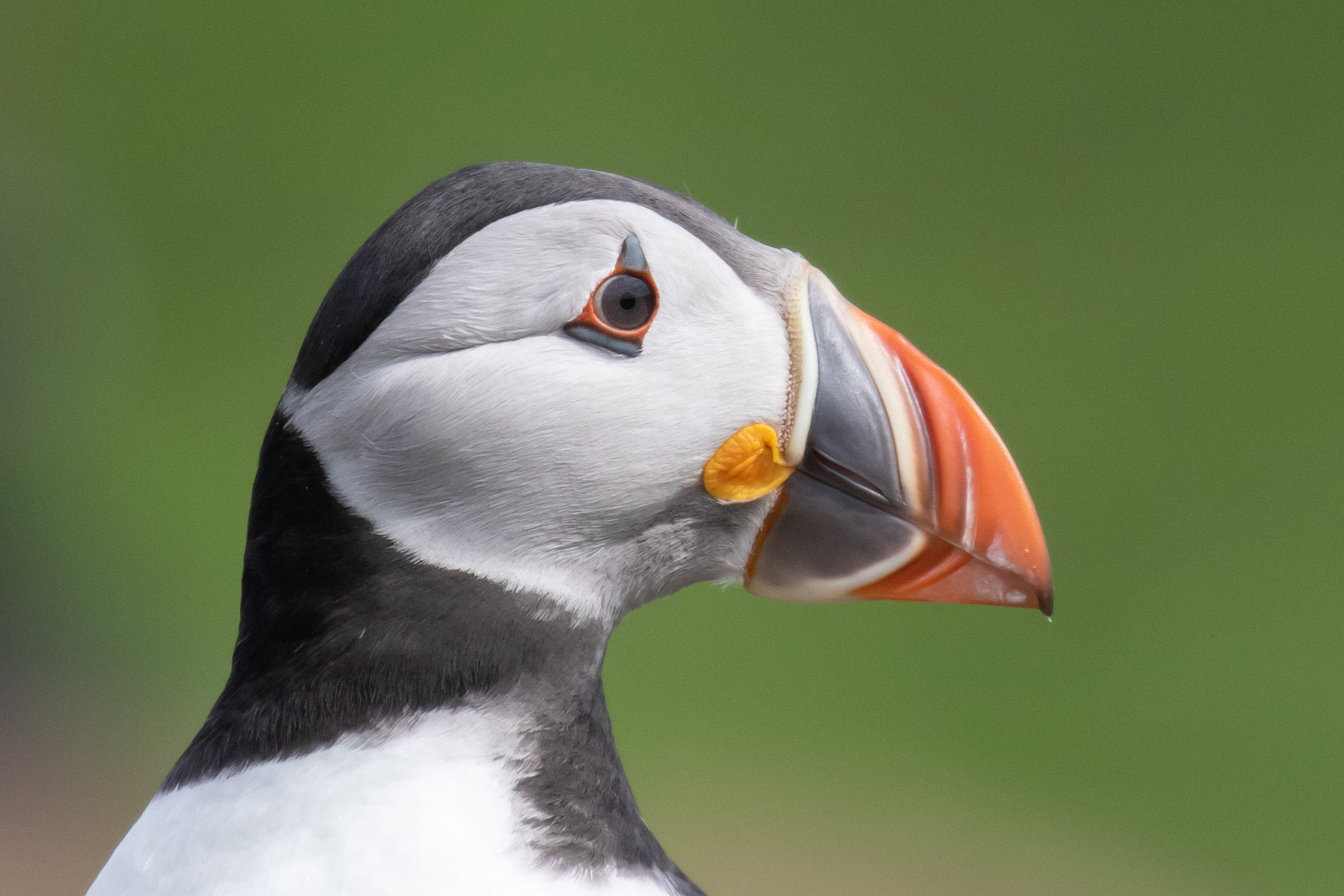I spent Saturday on the Farne Islands with a friend and his father, who was visiting the UK from abroad. They had asked to see some UK birdlife and I reasoned that our breeding seabirds are one of this country’s most spectacular wildlife sights. Although cold overnight (3 degrees in May!), the cloud quickly dispersed and for most of the day we had sunshine and blue skies – which also means blue seas in our photographs, a real bonus.
We travelled up to Northumberland on Friday, to a small town at the foot of the Cheviot Hills. I was delighted to find a breeding pair of Dipper under a bridge close to our house. Dawn on Saturday found us by the river, watching the comings and goings of thse fabulous birds:

Then, after breakfast, we drove to Seahouses to catch the boat to the Farne Islands.
Immediately there were birds and wildlife. This smart drake Eider was one of a small number in the harbour:
As we left the harbour, a series of distant splashes drew our attention to a distant pod of Bottlenose Dolphin in the bay:
As we approached the Farnes, the sheer number of seabirds around the islands became apparent:
There were vast numbers of Guillemots, smaller numbers of Puffins and Razorbills, with Kittiwakes circling above and Shags jump-diving for fish. A few of the Guillemots were of the bridled form, with smart white eyewear:
But it was always the Puffins that caught the eye. Seeing these birds close on the water in sunshine was a real treat:
We landed on Staple Island, where one can walk just a few meters from thousands of breeding seabirds. Shags were nest building and incubating all around us:

Razorbills were breeding too, but not in the same vast numbers as the Guillemots:
I have visited the Farnes before, in July 2011. It was fascinating to see the different behaviour of the birds at this time of year, at a much earlier date in the breeding season. There were no birds bringing in fish, as no young had been hatched yet. Instead the Puffins were in courtship and burrow-claiming mode. Some birds had obviously been underground recently:
Whilst others ran around with beaks full of nesting material:

We saw a wide variety of social interactions between the Puffins. The bird below was actively defending a burrow entrance. Bill-gaping is antagonistic behaviour, revealing the birds bright yellow gape and tongue:
The left-hand bird of this pair approached the right-hand bird with a low-profile-walking display, before they began bowing to each other:
Then it was time for some portraits:

Getting flight pictures of Puffin takes some time, they are fast fliers. I eventually found a spot where I could look down on approaching Puffins, where the light was good and the sea appeared blue:

We left Staple Island at lunchtime and took the boat to Inner Farne.
This larger island has the breeding auks of Staple Island, but also many breeding terns, including Arctic, Common and Sandwhich Terns. The Arctic Terns here are ridiculously tame:
This early in the season we saw little aggressive behaviour from the the Arctic Terns. In July one needed head protection to avoid birds diving at visitors on the walkways. 


The cliffs also held breeding Guillemots, plus a small number of bridled birds, my favourite form: 

But even on Inner Farne, Puffins were everywhere. The numbers were astounding. They sat on open grassy areas, on buildings, on walls…
… even flying directly overhead:
The day finished, as it had begun, with a nice drake Eider:
We left the Arctic Terns and breeding seabirds and sailed back to Seahouses:
Visiting the Farne Islands in the breeding season is an almost overwhelming experience. The sheer number of breeding birds is a powerful assult on one’s senses, both sight and smell! But being surrounded by thousands of Puffins makes the day a very special encounter. 

Fantastic! Never been to the Farnes, and it’s now 17 years since I visited Skomer and had encounters with a similar array of species, esp the Puffins.